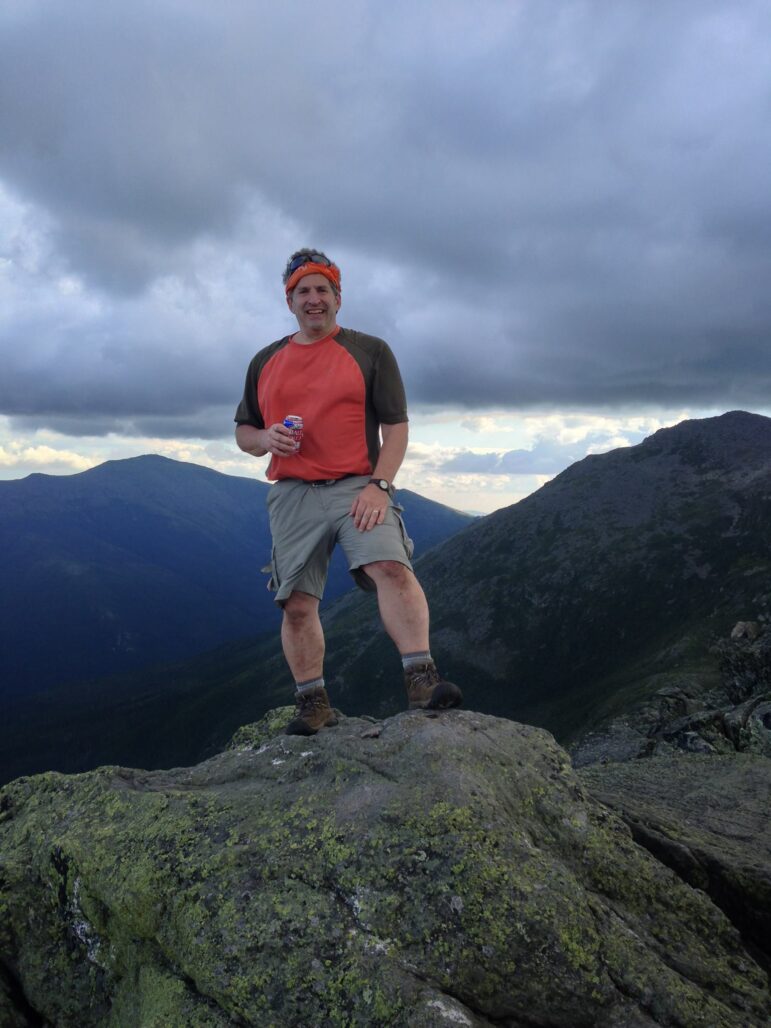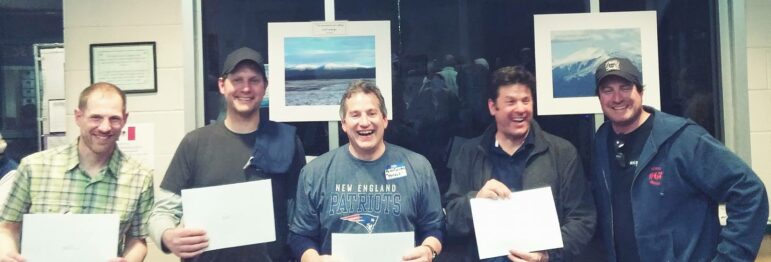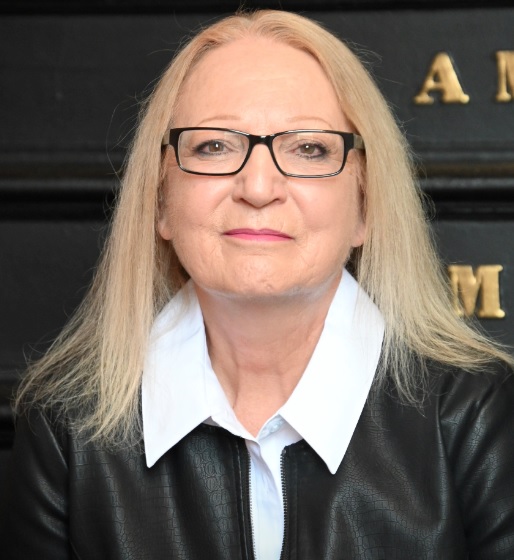A four-year journey hiking and summiting New Hampshire’s 48 Highest Peaks
NEW BOSTON: When Keith Gentili was 44 years old, he had a goal: to become a member of the AMC Four Thousand Footer Club. According to amc4000footer.org, the list was formed to “introduce hikers to some of the lesser-known sections of the White Mountains of New Hampshire.” He planned to finish the list by his 48th birthday, which he did that night four years later.

“I didn’t know about the NH 48. I just wanted to climb the Franconia Ridge. I’ve been hiking my whole life. I read about the Franconia Ridge Loop in Backpacker Magazine. I was telling a neighbor of mine at a 4th of July party. He said off the cuff; you should do the NH 48. My uncle did that. I said what’s that? It changed the trajectory of my recreational life. It gave me this drive, this sense of purpose. Something happened, and I started working on this plan to finish the 48 in four years. It was very methodical for me. One hike per month, if I could do that over the course of four hiking seasons, I would get there. When I started, I thought the hiking season was from May to October. I didn’t know about winter hiking. By my third year, I was fully embraced in hiking year round, which changed everything for me.”
When reading the book, one gets the degree of Gentili’s determination, a resolve to keep moving towards that goal. Yet, there is an inescapable level of joy to this amount of hiking, most importantly because of old friends and new friends that Keith brought into this universe and the camaraderie they experienced. Together, they seemed fearless, hiking in all kinds of weather, hiking at night, and sometimes being the last ones off the mountain. He likened the experience to a college education, with each series of mountains changing from freshmen to sophomore, junior, and ultimately senior level.
“When I went to school in the mid-80s at Fitchburg State, tuition was $456 a semester for full-time tuition. I got distracted and lazy, and I failed a lot of classes. There was something about this adventure. I was determined to do it on schedule. I was determined to do it cleanly, as best I could. It fed the book title and format: four years, methodical, planning.”

“I use the analogy of college curriculum. Solo hiking, night hiking, backpacking which is overnight hiking, winter hiking, hiking in the rain and snow, wearing snow shoes, and wearing Microspikes – all those little pieces to the puzzle when you check them off and add them to your arsenal, it just made me better, stronger, a better hiking partner, whether to lead them or to follow with them. I felt that was the hiking arc. The writing arc follows the hiking arc. As the book evolves, our expertise grew, the adventures became bigger with more layers to the onion. We were eating better. It’s all those things that upperclassmen do at any college. As freshmen, we’re bumbling around campus. The kinship and the teamwork all came together.”
Of the group of hikers that took the journey with Keith, there were three primary hikers that I asked Keith to tell me about.
“Eric Hansen, my college roommate, my senior year. He became a thriving force with me. He fueled me. He offset my early cautious approach. I was over-planning and being very conservative. We’ll be fine, he said. We can do this. It helped. He had climbed about half of the 48 and was training for Mt. Rainier (in Washington State). We hiked thirty mountains of the 48 together.”
“Eric Engler, also a Fitchburg State graduate and a very good friend of mine, was the character whose story was, I don’t want to climb the 48. I like hiking, but I don’t hike, but I like you guys, and his go-to quote was, well, my buddies are going hiking, and I want to spend time with my buddies. He says throughout the book, I don’t think I can do this. I don’t have the right gear or knowledge. I trust you guys. I can do it with you. By the junior year, he starts to develop confidence. He takes his son on a hike. He does a couple of solo hikes. He hiked twenty-five of the 48 with me.”
“The third primary partner was Keith Rice. It’s a coincidence, two Erics and two Keiths—all Fitchburg State graduates. Keith Rice hiked eighteen of the 48 with me. All three primary hikers finished. He was pivotal in the early days, and he was a veteran hiker. He always carried his weight and added to the group.”
“There are a couple of others that joined, the New Boston dads. Ron Reimer and Jason Unger hiked with me regularly toward the end. They were both with me on my final hike of Carrigan. They are very close, dear friends of mine today.”
“I had this aha moment. The book is not my story. It’s everyone’s story that went along with me and the relationships between us all. It’s about people and their relationships with each other and their families. The book is not a how-to but a how-I-did it. It can be a roadmap for others but not so much a guide. I always chose the toughest routes. We wanted to make the juice worth the squeeze. It created a lot of challenges and great moments, but I wouldn’t recommend that for everybody.”
I asked Keith to give me an easy and hard hike, as hikers and non-hikers will be reading his book.
“There are two hikes in Crawford’s Notch; one is Mt Pierce, and the other is Mt Jackson. They both start near the Crawford Depot. They’re half-day hikes. Depending on your hiking speed, nobody should hike at a speed that is uncomfortable. If you climb Mt Jackson from Crawford Notch, it’s 2.5 miles up and 2.5 miles down, and you can do it in four hours comfortably. Other than that last part of the climb, the grade isn’t too bad. Pierce has the Crawford Path, the oldest hiking path in the United States. That was designed for horses and carts a hundred years ago. So there is a certain grade to that which gets you up to the top of Mt Pierce on the Presidential Range and gives you great views of Mt Washington. When you get to the top of Pierce, and you see Washington on a clear day and the Presidential Range, it’s beautiful, and it’s the kind of hike that anyone can do who is driven and wants to and is in shape.”
“Vertical gain is the defining factor. The northern Presidentials, Adams and Madison, are very tough. They’re longer hikes. You’re up around ten to twelve miles, depending on your route. There are ten different routes up any one of these mountains. There are a couple of steep hikes. The tripyramids are steep, which is a rock slide you go up. Depending on the difficulty, mental versus physical, there’s one hike, Owl’s Head. It’s sneaky. It’s eighteen miles, no matter what you do. It’s a traditional day hike. The last mile, nine in and nine out, the first eight in are just about flat. The last mile, you go straight up, and then you come straight down. Eighteen miles for anyone is challenging.”

The AMC Four Thousand Footer Club celebrates hiking accomplishments yearly with an awards night and dinner. Keith talked about the night he got his award and four other friends who had joined him on this journey.
“It certainly over-delivered. We were at Exeter High School, and the auditorium had 600 people, standing room only. There was a real buzz in the room. My family came. Five of us went. The smiles on our faces are unmistakable. We were just so happy. It was just this magical thing.”

Beverly Stoddart is a writer, author, and speaker. After 42 years of working at newspapers, she retired to write books. She is on the Board of Trustees of the New Hampshire Writers’ Project and is a member of the Winning Speakers Toastmasters group in Windham. She is the author of Stories from the Rolodex, mini-memoirs of journalists from the 1960s, 1970s, and 1980s.





